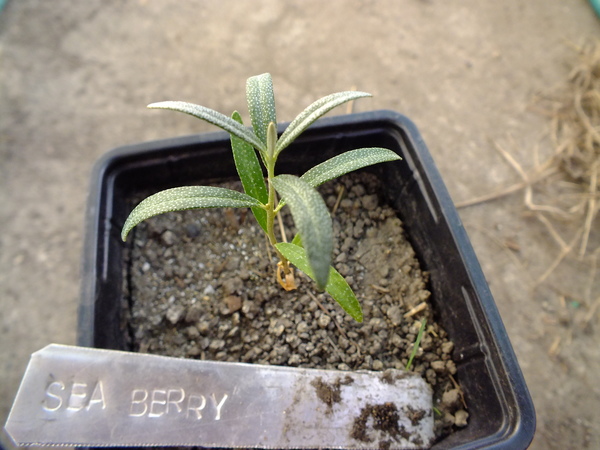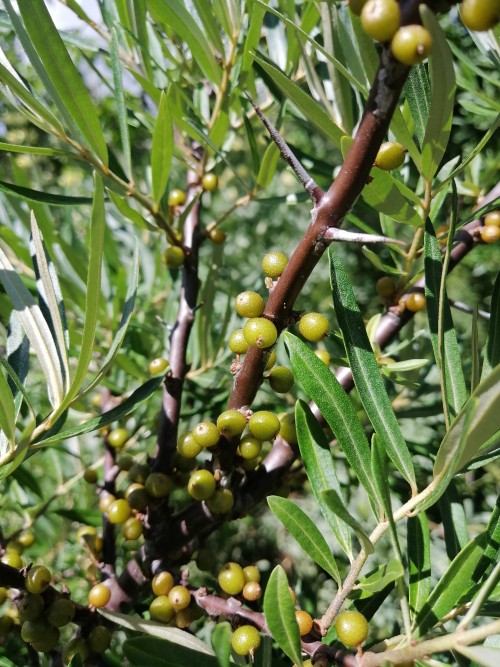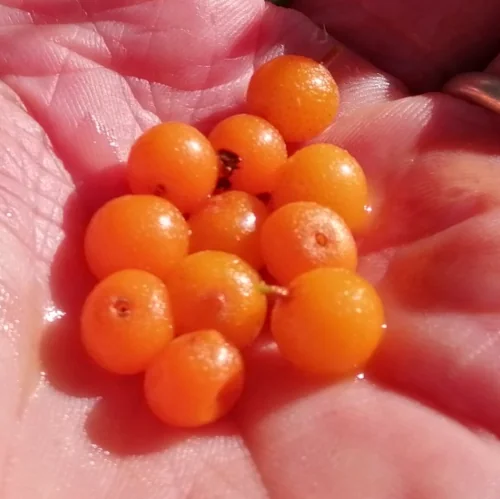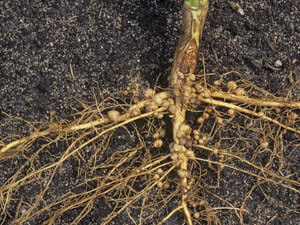Description of Hippophae rhamnoides (Sea Buckthorn)
Hippophae rhamnoides, commonly known as sea buckthorn, is a hardy, deciduous shrub native to Europe and Asia. It is prized for its bright orange berries, which are rich in nutrients and have multiple health and industrial uses.
- Height: Typically grows 2–6 m tall, depending on the variety.
- Leaves: Narrow, lance-shaped, and silvery-green, measuring 3–8 cm long.
- Flowers: Small and inconspicuous, appearing in early spring (August–September in the southern hemisphere).
- Fruit: Bright orange, round or oval berries, 5–10 mm in diameter, ripening in late summer to autumn (February–April).
Propagation
1. By Seed
- Collection: Harvest seeds from ripe berries in autumn (March–April). Clean and dry the seeds.
- Stratification: Seeds require cold stratification for 2–3 months. Place seeds in moist sand or sphagnum moss in a refrigerator (1–5°C).
- Sowing: Sow stratified seeds in late winter to early spring (July–September). Sow 1 cm deep in a well-draining seed mix and keep moist.
2. By Cuttings
- Hardwood Cuttings: Taken in winter (June–July), using 15–20 cm sections of mature wood. Plant in sandy soil and keep moist until rooted.
- Softwood Cuttings: Taken in spring (September–October), using young shoots. Dip in rooting hormone and plant in a propagation mix.
3. By Suckers
- Sea buckthorn naturally produces suckers from its roots. These can be dug up and transplanted in late winter (July–August).
4. By Grafting
- Used to propagate specific cultivars, ensuring consistent fruit production and quality.
Cultivation
1. Climate and Soil
- Climate: Thrives in temperate to cold climates. It is highly frost-tolerant and suitable for windy or coastal areas.
- Soil: Prefers sandy or well-draining loamy soils with a slightly acidic to neutral pH (6.0–7.5). It tolerates poor, saline, or dry soils due to its nitrogen-fixing ability.
2. Planting
- Plant in late winter or early spring (July–September) when the soil is workable.
- Requires full sun for optimal growth and fruiting.
- Space plants 1.5–2.5 m apart in rows, with male plants interspersed for pollination. A ratio of 1 male to 6–8 female plants is ideal.
3. Watering
- Drought-tolerant once established, but young plants need regular watering during the first year.
4. Pruning
- Prune in late winter (June–July) to remove dead or crossing branches and shape the plant.
5. Pollination
- Dioecious, requiring male and female plants for fruiting. Pollination is wind-dependent.
Uses and Benefits
1. Nutritional Uses
- Berries are rich in vitamin C, vitamin E, omega fatty acids, and antioxidants.
- Used in juices, jams, sauces, teas, and dietary supplements.
2. Medicinal Benefits
- Promotes skin health, boosts immunity, and supports cardiovascular health.
- Sea buckthorn oil is applied topically for burns, wounds, and skin disorders.
3. Environmental Benefits
- Fixes nitrogen in the soil, improving fertility.
- Prevents soil erosion and is used in reforestation and land reclamation projects.
4. Industrial Uses
- Berries and leaves are used in cosmetics, skincare products, and pharmaceuticals.
5. Wildlife Habitat
- Provides food and shelter for birds and pollinators.




